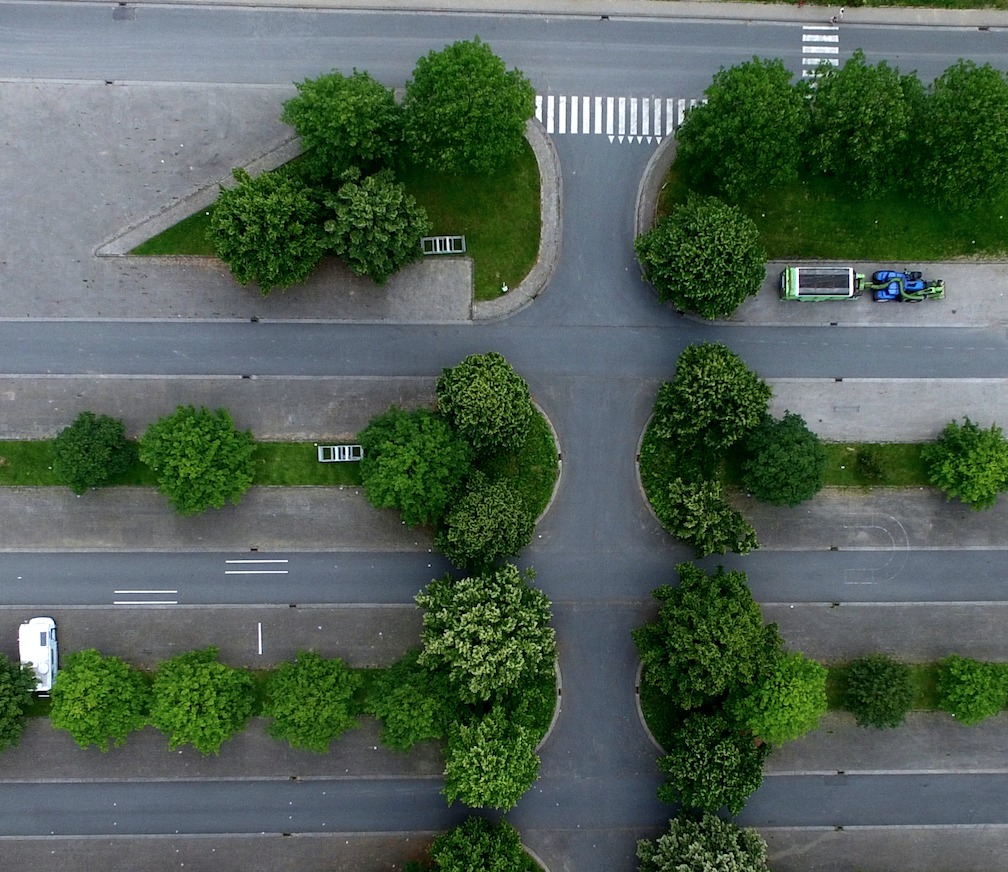You may associate planting time with Spring, but when it comes to trees, Fall and Winter rule - at least in our mild climate. (Just another advantage of Southern living - no need to compress all our planting tasks into a few short weeks in spring!)
The reason for this is that it allows the tree to start establishing roots right away without expending energy into shoots and leaves. Planting while a tree is dormant also helps minimize transplant shock.
Recently we listed some of our favorite trees to plant in lawn areas in Georgia. Since prime tree planting time is upon us, we thought we’d follow up with a few tips to help your new trees off to the very best start possible.
Success Tips For Planting Trees In Lawn
 Here are a few things to keep in mind as you prepare to plant your young trees:
Here are a few things to keep in mind as you prepare to plant your young trees:
Give them space.
Don’t be deceived by the diminutive size of your new little trees. Before planting, take good stock of what the mature size of your plant will be.
Remember: by the time it gets large enough to be a problem, transplanting won’t be an option.
Do not place any tree closer than 20 feet to a house or any structure!
This may seem redundant to the point above, but it bears repeating. Tree roots can damage foundations, infiltrate sewer lines and buckle pavement, and dropping branches can inflict damage on rooftops. Plus you may have to constantly prune the tree to keep branches from hitting the home during storms. Keep in mind that the 20 foot rule is a minimum: the mighty oak and similar large, spreading trees need to be planted even further from the home.
Avoid planting near major utilities.
Utility lines often run very close to the surface, and you do not want to hit them during planting. Also, planting too close to infrastructure is asking for major trauma to your tree if the lines ever need to be dug up for service. Contact your local utility company and/or visit c all811.com for information on how to locate utility lines on your property. (Many municipalities legally require you to locate your utilities before digging, so don’t skip this step!)
Don’t plant under power lines.
Trees growing into wires can create dangerous situations. If your trees grow into utility lines they will have to be pruned, which always looks horrible. Again, take the tree’s mature spread and height into account when planting.
Dig a proper hole.
Dig the hole no deeper than the root ball of the tree, but twice as wide.
How To Plant Trees In Lawn in Georgia
 1. When you plant your new tree, make sure the bottom of the hole is firmly packed. This will help keep settling to a minimum. Set the tree so the top of the root ball is about 1” above the natural soil level, as the tree will settle a little no matter how firmly packed the bottom is.
1. When you plant your new tree, make sure the bottom of the hole is firmly packed. This will help keep settling to a minimum. Set the tree so the top of the root ball is about 1” above the natural soil level, as the tree will settle a little no matter how firmly packed the bottom is.
2. Once your tree is placed, add about 1/3 of the displaced soil back into the hole. Then, start gently soaking the hole with a hose, filling in soil around the tree as you bring the soil level up. If your soil is dry or sandy, consider creating a shallow saucer of soil about as wide as the drip line around the base of the tree to help keep the soil moist until the tree establishes. Do not build a saucer in low or wet soils. You can also add fertilizer tablets or a bit of Ozmacote.
3. After planting, add a 1/2”-3” layer of pine straw, shredded cypress or hardwood mulch within the dripline. This is very important to deter weeds that will compete with your new tree for water. Spread the mulch to at least a 5’ diameter even for a small tree. Newly planted trees are easily overlooked, and the mulch ring will help alert lawn mowers to their presence.
4. If you live in a rural area or any place where deer and rabbits roam, you may also want to use a trunk wrap for the first season or two. These animals enjoy a new tree. Rabbits will gnaw at the bark, and deer love to rub their antlers on young tree trunks. Trunk protectors will help prevent these critters from damaging or killing your tree.
5. For the first year or so after planting, watering is critical. Do your best to keep the soil under your tree evenly moist, but not too wet. How much watering your tree will need depends largely on your soil type and weather. However, if you are transplanting a larger tree (2” diameter and up) one thing is for sure: don’t rely on natural rainfall. You’ll have to supplement water to provide the tree with enough water to support it. This is especially true for lawn plantings, because turf itself requires a lot of water as well.
Ready to plant...but not keen to shovel?
Planting trees can be meditative, even relaxing, if you enjoy hard work. Not everyone does. If you’d rather sit back and enjoy the results without getting your hands dirty, we won’t blame you one bit!
That’s what we’re here for, after all. We’ll happily handle the whole production, from proper placement to digging to post-planting care.
Give us a call at 478-750-7733 (Macon), or 478-272-3878 (East Dublin). Or, reach out to us online and we’ll be happy to speak with you about getting your trees in the ground the easy way!
1 Oct 2024




